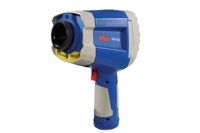Road Hazards
David Kolman
The fundamentals of
driving have become so routine and familiar that drivers have a tendency to
lose their concentration behind the wheel and their minds begin to wander.
They frequently become distracted by things
inside and outside the vehicle.
Road hazards can be
anything in or on a roadway, and they pose threats for all drivers, but are
especially perilous for distracted drivers. They may not become aware of
them until the last moment, if at all.
Reminding your drivers to expect the unexpected and to
be constantly alert for road hazards can help them avoid safety problems or
being involved in an accident.
Obviously, the best way to avoid road hazards is to be
aware of them and to steer clear. To do this safely, drivers must be able
to spot such hazards from a distance. So they should look farther ahead to
allow extra time and space to react. Sudden movements by vehicles ahead of
them may often indicate a hazard in the road.
Once spotted, drivers should slow down before reaching
the hazard and signal their maneuvering intentions to others. Then, only
after making certain they have enough room to safely make the maneuver
— changing lanes or swinging wide, by way of example — should
the necessary action be taken.
Drivers should always maintain a safe distance from
other vehicles and be watchful for any road debris, as well as
deteriorating road conditions such as potholes, deep ruts and fissures.
Vehicles can sometimes kick debris into the air or bounce them along a
roadway, creating additional hazards and safety issues. The most common
types of road debris, a recent study found, are pieces of tires, garbage
dropped by waste haulers, construction materials, mufflers and exhaust
parts.
Furthermore, your drivers should be prepared for other
drivers who may not be paying attention and do not spot road hazards until
the last minute, then swerve haphazardly to avoid them without considering
the surrounding traffic.
There are occasions when it is safer to run over
debris in the road rather than try to avoid it. Striking minor pieces of
debris can be far less dangerous than veering into oncoming traffic or
swerving off the pavement.
Knowing where the vehicles around them are will help
drivers make the right decision.
By noticing and avoiding hazards well in advance, a
driver also helps other motorists identify
potential problems.
Partiuclar situations
Drivers who travel the same route every day have a
tendency to become complacent. They should be
reminded that road and traffic conditions will not be the same each day.
Oftentimes, drivers attempt to optimize their time in
vehicles by using phones and other communications devices. This has safety
implications because using such devices negatively affects a person’s
ability to properly respond to road hazards, let alone more challenging
driving situations.
The likelihood of road hazards is increased at night.
Not only is it dark, but a person’s general visual acuity is
diminished. Moreover, eyes that are constantly dilating and constricting in
changing light conditions become tired quickly.
Driving in inclement weather conditions also demands
extra caution. Such conditions not only impair a driver’s vision and
may hide road hazards, they affect a vehicle’s traction and braking
as well.
Then there is the matter of drivers who do not use
their turn signals. Although they are not commonly thought of as a road
hazard, they are. A lot of drivers do not use their turn signals. No
surprise there. What is alarming are the excuses given for not signaling.
A recent national survey by Response Insurance found
that 57 percent of American drivers admit they do not use their turn
signals when changing lanes. The number one reason given (42 percent of the
drivers) is that they “Don’t have enough time.” Other
excuses:
Just plain lazy (23 percent).
Don’t use turn signals because when
they do, they
forget to turn them off (17 percent).
Change lanes too frequently to bother
(12 percent).
Because other drivers don’t (11 percent).
The most disturbing reason, however, given by 7
percent of the drivers, was that they don’t use turn signals because:
“It adds excitement to driving.”
The survey also indicated that men are more likely
than women to not use their signals when changing lanes (62 percent vs. 53
percent). So are younger drivers (ages 18-24), 71 percent of whom reported
they don’t signal, as compared to 49 percent of older adults (ages
55-64).
Having drivers report dangerous road conditions, such
as road debris and vehicles that appear ready to lose their loads or are unsafe, not only helps make the roads safer, but
it makes your company a better neighbor. BI
David Kolman is a veteran truck communicator, keynote
speaker and long-haul trucker. Commissioned as an Honorary Colonel on the
Kentucky governor’s staff for his work promoting traffic safety, he
actively participates in trade associations and reports news and
information about the trucking industry for broadcasting and print media.
Driver distractions
Each year, hundreds of thousands of distracted drivers
are involved in serious crashes. While a percentage of these drivers were
simply not paying attention, many were distracted by something inside or
outside the vehicle resulting in no hands on the steering wheel, the
driver’s gaze directed away from traffic, an increased incidence of
wandering in the travel lane or crossing into another travel lane.
Among the most common driver distractions:
Eating or drinking
Manipulating controls on audio, entertainment,
navigation systems, etc.
Using a cell phone/pager
Smoking
Reading/writing
Grooming
Occupant distraction
Road rage cities
The cities with the worst road rage (least courtesy)
are Miami, Phoenix, New York City, Los Angeles and Boston, according to the
first annual In The Driver’s Seat Road
Rage Survey.
The most courteous cities (least road rage) were found
to be Minneapolis, Nashville, St. Louis, Seattle and Atlanta.
Interestingly, the survey — commissioned by
national auto club AutoVantage — found “no real difference
between men and women when it comes to road rage.”
